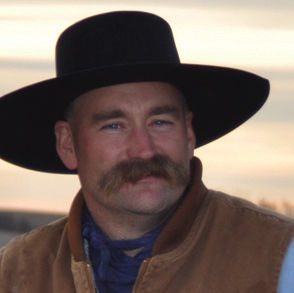We have a serious monopoly in the meatpacking business. In the late 1800s in New York City alone there were nearly 100 independent meatpackers. They were located in what is still called the meatpacking district, although now it is all condos and residences and there are no sides of swinging beef.
As an interesting side note, in the late 1800s the No. 1 complaint was “the biggest four meatpackers have too much control.” Sound familiar? At some level, it is simply the nature of the beast. Despite the parallels, the battle in today’s world is that the cattlemen’s price of a live animal is 6% higher than the 5-year rolling average, while retail beef prices are 25% higher.
The meat industry is my topic today because of the events that just took place in the White House where they hosted a roundtable under the guise of trying to get the farmer their “fair share.”
First, in my observation the only thing Biden accomplished was bringing to light the fact that there really is a problem. These packer margins have been far too large for far too long without passing fair market value back down the food chain. Interestingly, the pork system doesn’t have the same issue, per se, but maybe that is because most of the pork players are already tied to the packer so that increase is automatic. Yet, the brilliant minds in the White House came up with this:
“Four large meat-packing companies control 85% of the beef market. In poultry, the top four processing firms control 54% of the market. And in pork, the top four processing firms control about 70% of the market. The meatpackers and processors buy from farmers and sell to retailers like grocery stores, making them a key bottleneck in the food supply chain.
“Most farmers now have little or no choice of buyer for their product and little leverage to negotiate, causing their share of every dollar spent on food to decline. Fifty years ago, ranchers got over $0.60 of every dollar a consumer spent on beef, compared to about $0.39 today. Similarly, hog farmers got $0.40 to $0.60 on each dollar spent 50 years ago, down to about $0.19 today.”
Please, White House “team of experts,” explain to me how 39% of the consumer beef dollar is finding its way back to me and other producers? The two paragraphs they presented to the public don’t even make sense. If twice the value of the consumer’s food dollar for beef compared to pork gets back to the producer, does that mean that packer control (85%) is a good thing? They don’t even understand their own words.
But their plan is a $1 billion dollar hand out they claim will fix everything. That subsidy is supposed to fix things like they list below:
• Expand and diversify meat and poultry processing capacity;
• Increase producer income;
• Provide producers an opportunity to have ownership in processing facilities;
• Create stable, well-paying jobs in rural regions;
• Raise the bar on worker health, safety, training, and wages for meatpacking jobs;
• Spur collaboration among producers and workers;
• Prompt state, tribal, and private co-investment; and
• Provide consumers with more choices.
First, I want to be very clear that there is a serious problem. However, the problem will never be fixed by the government; it will only be fixed by the consumers’ judicious use of their food dollar. If you don’t like the gouging taking place in retail, shop somewhere else because many great options exist. For starters, quit supporting big box giants and online shopping monopolies that only serve to provide the cheapest possible alternatives for their consumers while taking from the producers that raise it.
Selling direct is not easy but is always an option. We have worked hard not to sell one critter into the consolidated system since 2013. Another solution is more local butcher shops and increased regional meatpacking capacity. However, in talking to people who are working to increase local processing options, they say their greatest challenge is the federal government, not only because of unnecessary regulations in production but also finding people who will work the jobs.
Sign up for HPJ Insights
Our weekly newsletter delivers the latest news straight to your inbox including breaking news, our exclusive columns and much more.
Consumers have plenty of choices if they are willing to get off the couch and seek them. Collaboration of all kinds already exists at many levels so dumping more money into a black hole isn’t going to solve anything.
Editor’s note: The views expressed here are the author’s own and do not represent the views of High Plains Journal. Trent Loos is a sixth generation United States farmer, host of the daily radio show, Loos Tales, and founder of Faces of Agriculture, a non-profit organization putting the human element back into the production of food. Get more information at www.LoosTales.com, or email Trent at [email protected].


